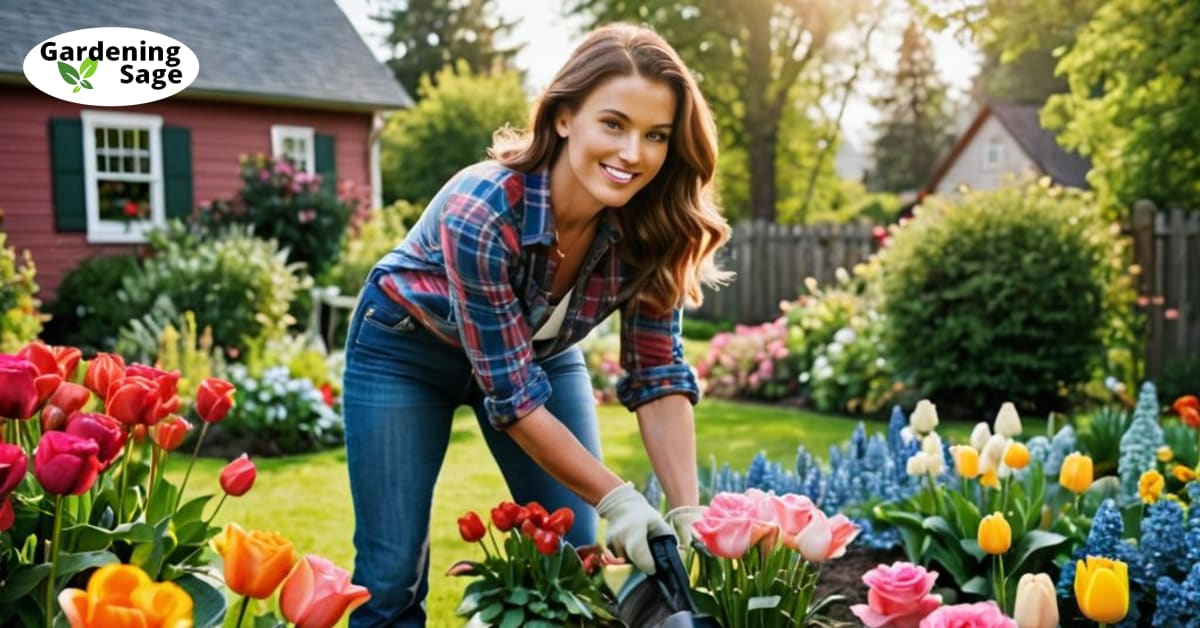A Bounty of Blooms: Crafting Your Dream Flower Garden
Whether you’re a novice gardener just starting out or a seasoned green thumb with years of experience, there’s nothing quite like the joy and fulfillment that comes from tending to your own flower garden. The act of nurturing plants from seed to bloom is a rewarding journey that can bring peace and beauty to your life. From the vibrant hues of annuals to the graceful elegance of perennials, a thoughtfully designed flower garden promises endless possibilities and a canvas for personal expression. As you embark on planning your floral oasis, consider the following comprehensive tips and ideas for crafting a flower garden that will flourish with beauty all season long, and perhaps even provide a habitat for local wildlife such as butterflies and bees.
Picking the Right Location
When deciding where to plant your flower garden, it’s crucial to select a site that meets several key requirements. Proper sunlight is essential; most flowering plants thrive best in a spot that receives at least six hours of direct sun daily, though some may require partial shade. Proper drainage is also key to prevent soggy soil and root rot, which can be detrimental to plant health. And don’t forget to plan for mature plant sizes so your garden has room to reach its full potential without overcrowding. Consider the view from your home and how the garden will look in each season. Additionally, think about accessibility for maintenance tasks and proximity to a water source for easy watering.
Prepping the Soil
Preparing your soil is one of the most vital steps for growing gorgeous, healthy blooms. Begin by testing your soil’s pH and nutrient levels to understand its condition. Most flowers prefer a slightly acidic to neutral pH, but specific preferences vary. Amend as needed with compost or a balanced fertilizer to create an ideal growing medium rich in organic matter. Thoroughly till the soil to a depth of 8-12 inches to allow for healthy root development and to ensure that water and nutrients can penetrate effectively. You may also consider building raised beds for better drainage and to create a defined space for your flower garden. Raised beds can also help with pest control and can make the garden more accessible for those with mobility issues.
Choosing the Right Flowers
When selecting flowers, consider your USDA Hardiness Zone, which provides valuable information on which plants are most likely to thrive in your local climate. Also, take into account the sunlight patterns in your chosen location, as some flowers may require full sun, while others flourish in partial shade. Think about your desired color schemes and how they will complement your home and landscape. Aim for a diverse blend of annuals, which will bloom for one season and need to be replanted each year, and perennials, which return year after year, to ensure continuous blooms throughout the growing season. Some classic picks include the lush, full blooms of peonies, the charming faces of pansies, the bright and cheerful marigolds, the bold and colorful zinnias, and the hardy, daisy-like coneflowers. Don’t forget to include fragrant varieties like the intoxicating gardenias, the sweet-scented lilacs, and the soothing lavender to engage all your senses and create an aromatic retreat. Additionally, consider the timing of blooms to create a succession of color, ensuring that as one plant’s flowers begin to fade, another’s are just beginning to open.
Arranging and Planting with Purpose
Strategically arrange your plants according to their sunlight needs, mature sizes, and desired visual impact. Mass groupings of the same flower can cultivate a cohesive look and make a bold statement. Intermingle complimentary colors and textures for added interest and a more natural appearance. Use trellises, arbors, and garden art to add vertical elements and create layers in your garden, which can draw the eye upward and make the space feel larger. When planting, space plants appropriately according to their mature size to allow for proper air circulation and growth. Water thoroughly after planting to settle the soil around the roots and to provide a good start for your new flowers.
Ongoing Care and Maintenance
Regular watering, weeding, deadheading spent blooms, and pruning are key for an abundant and healthy flower garden. Apply a layer of mulch around plants to conserve moisture, regulate soil temperature, and inhibit weed growth. Stake tall flowers like delphinium and gladiolus for support to prevent them from falling over. As seasons change, be prepared to swap out cooled-season annuals for warm-season varieties to maintain a vibrant display. Additionally, consider the use of fertilizers and pest control methods that are appropriate for the types of flowers you are growing. With attentive care and maintenance, your flower garden will continue flourishing through the seasons, providing a stunning display of colors and textures that can transform your outdoor space into a living work of art.














